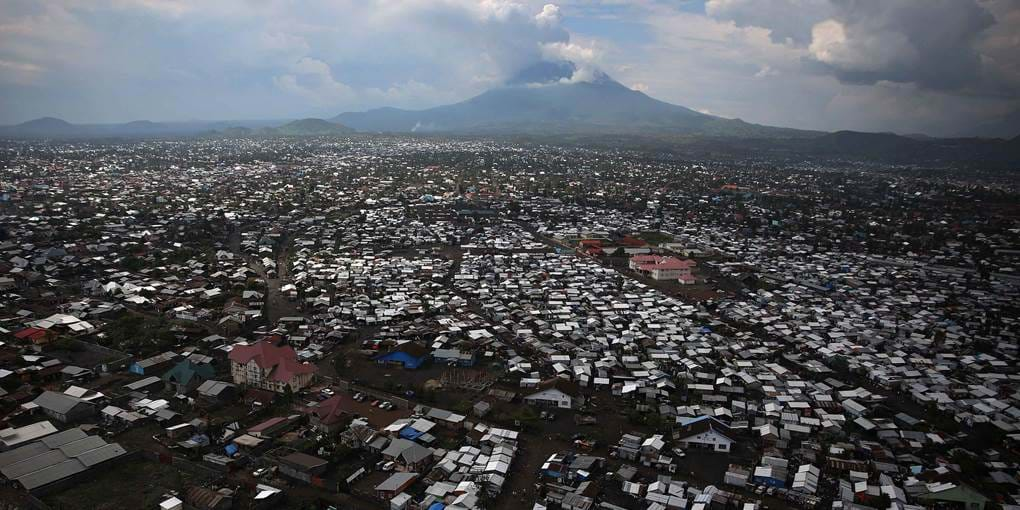Vodacom RDC & Flowminder release a report on population displacements following the eruption of Mount Nyiragongo in the Democratic Republic of the Congo.
Mount Nyiragongo is one of Africa's most dangerous volcanoes, its fast lava flows being able to reach tens of km/h on the volcano flanks. Located east of the Democratic Republic of the Congo (DRC), near the border with Rwanda, the volcano holds one of the world's largest lava lakes and is situated only 12 miles (19 km) north of the city of Goma, home to around 1.5 million people.
Known for its devastating eruptions, Mount Nyiragongo took the world by surprise when the flames of a new eruption spewed into the sky on 22 May 2021. The lava flows rapidly invaded the streets of neighbouring villages in the region of Goma, forcing thousands of people to flee their homes.
Following the eruption, reliable and timely data on population movements can help humanitarian and government actors understand how many people have been affected by the disaster, assess where help is needed and determine best response and recovery efforts in the short to medium term. With mobile operator data, it is possible to map estimated flows of displaced people following a disaster. Building on their collaboration set up in 2018 to leverage the use of mobile operator data for development and humanitarian purposes in the country, Flowminder and Vodacom RDC were able to marshall their resources to rapidly produce a mobility report on the displacements caused by the evacuation of Goma, based on anonymised subscriber data from the operator.
The report presents a series of mobility analyses extracted from de-identified and aggregated Call Detail Records (CDR), a dataset automatically generated by Vodacom for billing purposes. CDR data can be used to estimate the location of groups of subscribers (data is aggregated -grouped- to preserve privacy), based on the location of the cell towers that registered the phone activities. The analysis can help monitor the return to normal and provide essential information to support decisions related to allocating resources for displaced people efficiently. The data is safely and securely processed, accessed and analysed through FlowKit, Flowminder’s open source toolkit installed in 2020 behind Vodacom RDC’s firewall. All the results are aggregated and anonymous statistics in order to preserve the data privacy of Vodacom RDC’s subscribers.
“Mobile Network Operators, as shown by Vodacom RDC, can play a key role in supporting humanitarian stakeholders to identify and best address population needs in times of crisis. Flowminder is committed to support Vodacom RDC in turning their data into insightful information for the wellbeing of all in DRC.For greater impact, this work should be streamlined in the national disaster preparedness and crisis response framework”,
— says Xavier Vollenweider, Director of Mobile Data Partnerships at Flowminder.
“As a purpose-led company, Vodacom RDC connects people for a better future. Vodacom RDC works to enable an environment where connectivity opens a world of possibility to the community. We care about the well-being of the DRC population as a whole. This is why we are committed with Flowminder to having our data used to support vulnerable populations at scale and to speed up the achievement of the Sustainable Development Goals in our country. We believe that Data science will play a key role in this journey”
— says Anaiah Bewa, Head of Corporate & External Affairs at Vodacom RDC
This work is one of the projects in DRC led by Vodacom RDC and Flowminder. For example, Flowminder and Vodacom RDC jointly supported the Presidential Task Force against COVID-19 in 2020 by producing mobility reports across the pandemic. The two organisations are also working in close collaboration with the Ministry of Health for the GRID3 Mapping for Health project funded by Gavi which aims to improve the effectiveness and equity of vaccination interventions across the country.
Access the report (available in English and French)
Photo credit: MUNESCO, Wikimedia Commons
